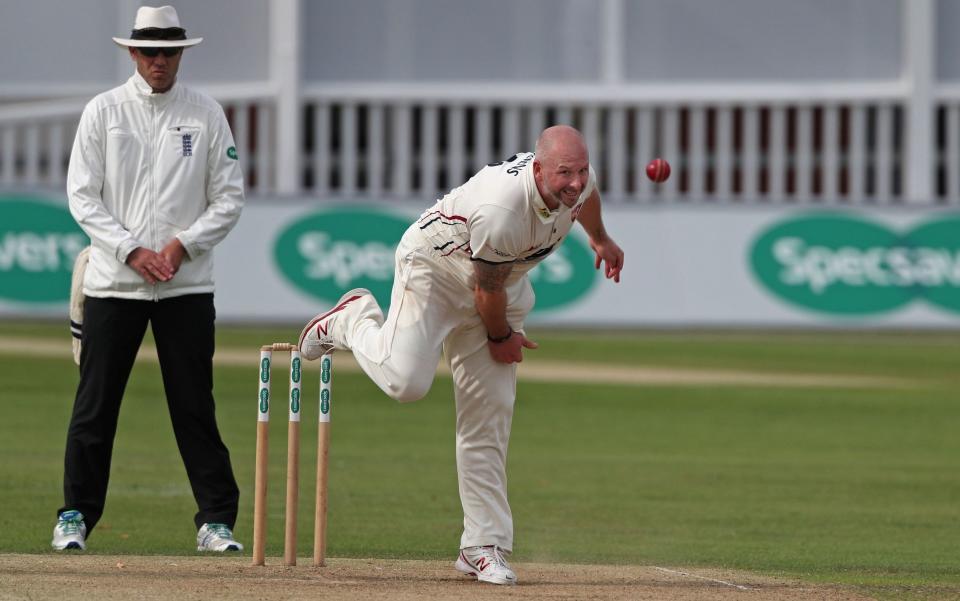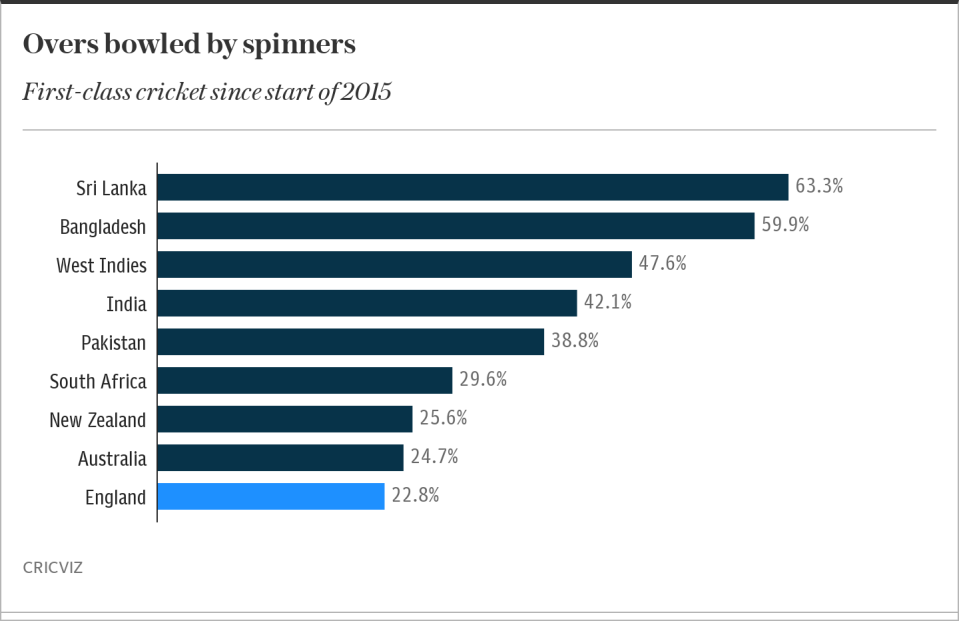County Championship in April: it's cricket, but not as we know it

Among all Test-playing nations, first-class cricket in England lies at one extreme in its domination by seam bowling. County Championship cricket in April, naturally, is at the extreme end of the extreme.
No Test nation in the world bowls a lower proportion of spin in their first-class competition than England.

In April the demands of first-class cricket in England are even more of an outlier. Since 2011, just 18 per cent of overs in County Championship cricket in April are bowled by spinners; in Tests in the same period, 41 per cent of overs are bowled by spinners.
Across the shires this week, many — perhaps even most — counties will think that they can do without a specialist spinner. They will think, reasonably enough, that a few overs of locum spin from a top-order batsman should suffice to provide a break for the seamers. In England in April, of course, the seamers often don’t need any respite: the average innings is all done in 79 overs.
After England’s frailties against spin were exposed in the last three Tests in India, it will be tempting to see the paucity of overs bowled by spinners over the coming weeks as evidence of counties’ myopic thinking. And while occasionally counties could be a little more creative in creating opportunities for spinners (could Somerset, say, have selected Dom Bess as an allrounder at No 7 to ensure he was more involved in the first team?) really the problem is simple.
County teams are selected to win. And at the start of the season most think they do not need much spin to do so: in April County Championship cricket over the past decade, the average team bowls only 26 overs of spin a match. When they do bowl, spinners are markedly less effective: they average 40 in April, while seamers average 29.
These seamers are a different species to the quicks found in Test cricket. At the start of the season in England, bowling fast is a futile, even counter-productive endeavour. Darren Stevens, who turns 45 this month and has 188 first-class wickets at 17.8 apiece since 2017, could attest to that. His method is to hammer out a relentless line and length and trust in seam movement to do the rest. Research by the ECB at the end of 2019 found that 19 per cent of balls by seamers in domestic cricket reached 83mph; in Test cricket, 61 per cent do.

So it is not simply that county cricket, especially in April, marginalises spin bowling. It is also that the type of seamers who thrive are different animals to the types that succeed in the Test game.
The effect of this double whammy is to reward bowlers whose skills are ill-suited to Test cricket, while rewarding batters who excel against a type of bowling that is almost redundant in Tests. The mark of a Test batsman is aptitude against high pace and spin, two types of bowling that are in scant supply in the County Championship. In the summer of 2019, Nick Gubbins, who is considered a potential future England player, played 15 first-class innings but only faced 77 balls of spin — fewer than an over's worth per game.
The weeks ahead will offer much intrigue. But just don’t mistake them for a guide to which cricketers will thrive in the cauldron of Test cricket. For County Championship cricket in April and Test cricket are tantamount to two entirely different sports.

